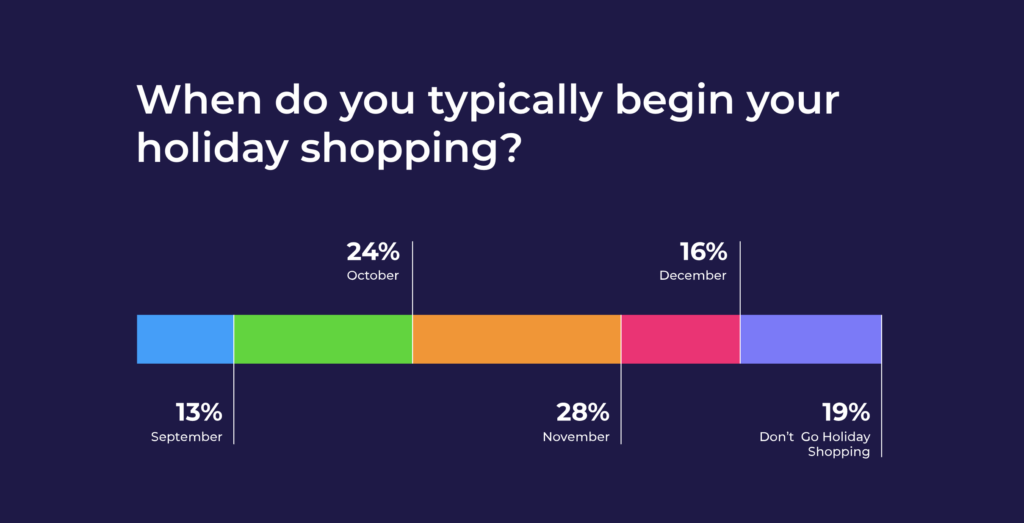The 2020 holiday shopping season was marked by supply chain shortages induced by the COVID-19 pandemic. It appears as though this year will be no different as the shortages are widespread, affecting large and small retailers alike. We have already seen big retailers reporting low inventory and warning consumers about possible delays due to logistics issues. These challenges will have ripple effects including planning for holiday marketing campaigns.
International Port closures, long wait times to unload at US ports, and labor shortages are just a few issues affecting every aspect of the supply chain. However, consumer demand for goods remains strong, with Deloitte reporting that e-commerce holiday sales are projected to grow 11% to 15%, compared to the 2020 season.
As we approach a critical season for retailers and e-commerce businesses, the significant ripple effects of this global supply chain will impact holiday marketing and shopping, possibly into 2022. How do companies and marketers make the most of this vital season amidst the disruptions?
We reached out to our friends and experts at Facebook and compiled a list of strategies to add to your marketing playbook as you plan and execute your holiday campaigns.
General Strategies
1. Prepare in advance for your hero products to have little or no inventory.
Each year, the holiday season starts earlier and earlier. We have already seen that Home Depot ran out of Halloween decorations and costumes in August! In 2020, Fluent, the leading performance marketing company in the United States, reported that 52% of shoppers will begin their holiday shopping in October and November.

However, this year, Jungle Scout, a SaaS-based tool for search and market analytics, is predicting that nearly a third of US consumers plan to start holiday shopping before Halloween. If this is any indication, there is a high chance that you might run out of product before the holiday season even begins!

Expert’s Advice – Marketing Tactics
Here are some tips to help you manage expectations and demand should you run out of or run low on your hero product.
- Advise the creative team to have other products ready to advertise. To highlight available goods, you can use the “Shop Our In-Stock Products Now” or “In stock” product label feed label.
- Show a variety of products in a carousel or video, so you are not relying on one product or category for revenue.
- You can analyze what your competition is doing using Facebook’s Ads Library. On Ads Library, search for an advertiser by name or any term associated with them to view the active ads running from the advertiser’s Page. This action is a great way to get some inspiration for your next steps.
- Review the 2020 buying behavior of your customers after Cyber 5 (The long shopping period that starts from Thanksgiving Thursday through to Cyber Monday) to see what other products consumers were purchasing. Your research findings will point you in the direction of what other products to prioritize.
- Encourage your customers to buy gift cards so customers can buy products at a later date when stock has been replenished.
Online Retail Revenue During Cyber Five in the United States in 2020

2. Champion Pre-Orders
Pre-orders are a great way to measure demand for a product. In addition, it helps generate buzz, build hype and increase sales for a soon to come product or service. Now more than ever, given the supply chain disruptions, it is essential to include a pre-order feature on your website or your social media ads so that when best sellers sell out, advertisers can still collect leads and capture demand. And when you get new stock, you already have a “ready to purchase” target audience to direct your marketing efforts towards.

3. Consider launching a major sale on Monday instead of Friday so that all hands are on deck.
Launching the campaign on Monday gives businesses time and capacity to iron out any kinks before the weekend rush.
4. Carry the Customer Along
Should you run into any shipping or delivery delays (as is already predicted given the supply chain disruptions), keeping your customers updated will help manage expectations and avoid negative backlash. On Facebook, for instance, If an advertiser receives a significant amount of negative feedback, it can affect that advertiser’s ad and commerce performance. A quick solution is to adjust the delivery speed of the product within the Customer Feedback Dashboard on Facebook. Successful marketing in spite of supply chain disruptions can be challenging and only the resilient will survive.
5. Push BOPIS messaging
Like last year, many retailers are preparing to offer BOPIS (Buy Online, Pick-up In-store) options. Statista estimates that Click and Collect retail sales will grow by $10 billion in 2021.
To this end, advertisers must incorporate BOPIS messaging into their marketing. This solution has several benefits including:
- Reduce the chance of shipping delays.
- Encourage in-store traffic.
- Offer potential buyers substitutes from your in-stock products.
A great way to encourage this option is by incentivizing customers who choose this delivery method.

6. Have other complementary goods on board to push when best-selling items go out of stock.
A great way to encourage sales of complementary goods is to offer them at a discount. If you go with this approach, however, your messaging must be value-driven to give the product credibility.
As we enter into another unpredictable holiday shopping season, your marketing efforts need to stay nimble to adjust to the dynamic supply chain industry. In addition to the strategies mentioned earlier, we expect to see even more creative solutions to help businesses meet their customers’ needs. However, no matter how innovative or high-tech the business solutions are, they are only effective if executed thoughtfully and early.
If you want to improve social media results for your e-commerce business or have questions, we’d love to chat!
